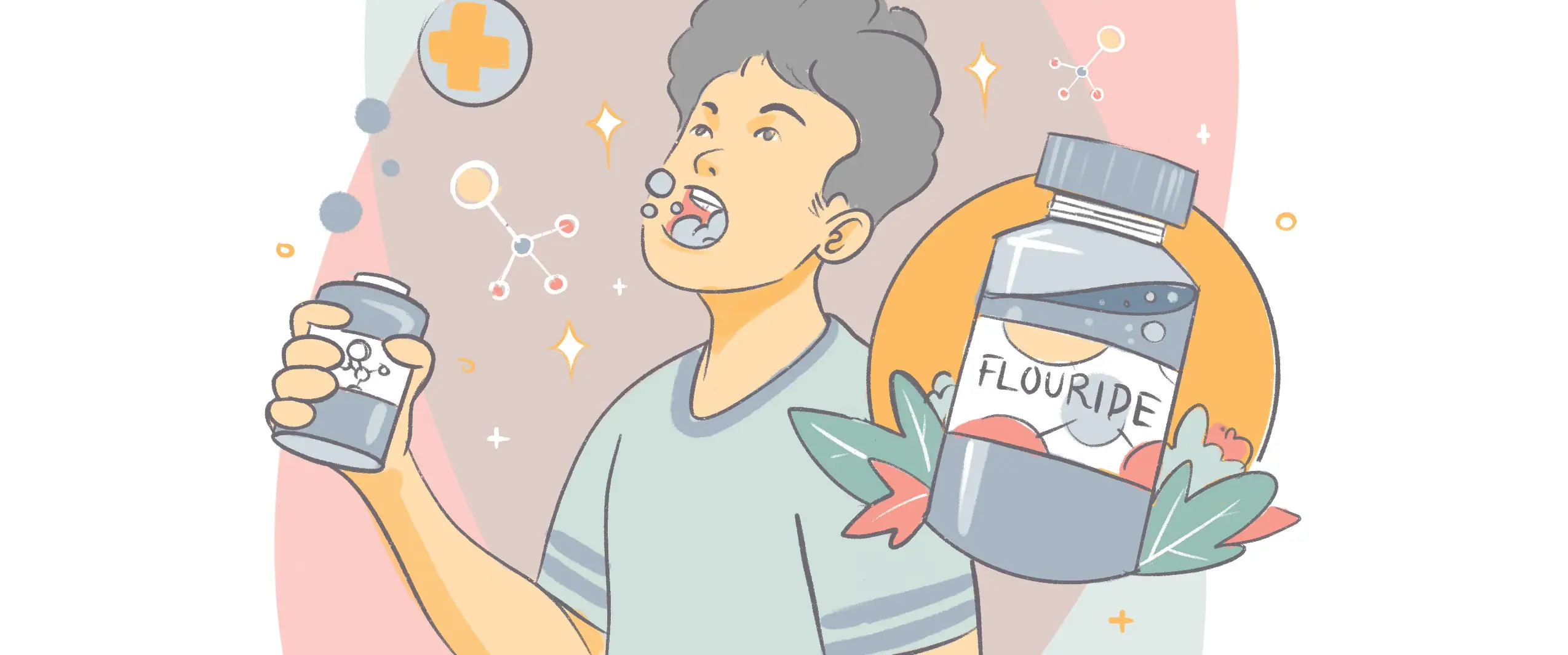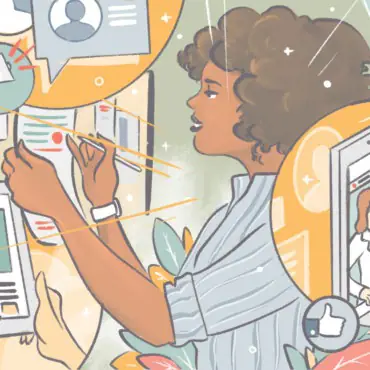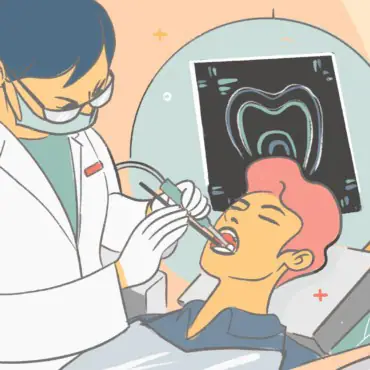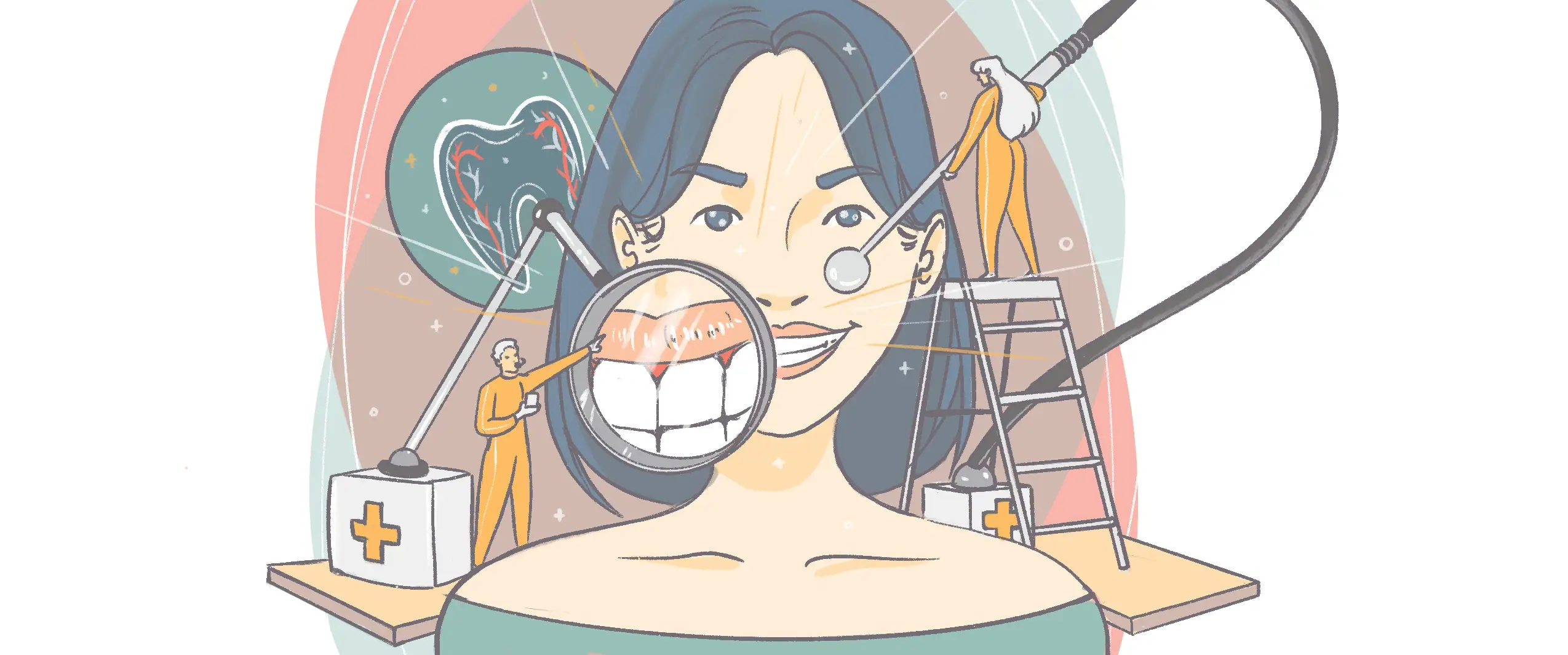What is fluoride?
Fluoride is a mineral found in the teeth and bones. It also naturally occurs in water, plants, soil, rocks, and even the air. Fluoride is commonly used to strengthen the outer layer of the teeth, known as the enamel.
Fluoride has been used for decades as an effective oral health treatment. It fights harmful bacteria that damage the teeth and gums and supports a healthy tooth enamel. It can also reverse early signs of tooth decay.
Our bodies take in fluoride both topically and systemically. Systemic fluoride, such as fluoridated tap water and supplements, is swallowed. Topical fluoride is applied directly to the teeth through:
- Toothpaste
- Mouth rinses
- In-office fluoride treatments
If you’re at high risk of developing cavities, fluoride is especially helpful in keeping your smile healthy. Cavities produce an acid that erodes the gum tissue and teeth. The acid can also break down the enamel.
When the enamel is affected, bacteria in the mouth can infect the inner part of the tooth, including the nerves and blood vessels.
Fluoride treatment is an effective way to minimize the risk of cavities. It strengthens the enamel, which works to protect the teeth from harmful bacteria.
What is a fluoride treatment?
Fluoride treatments at the dentist involve professional application of fluoride directly to the teeth. The mineral can be applied in various forms, including foam, gel, and varnish.
Once applied to the teeth, the varnish, gel, or foam penetrates the tooth enamel to strengthen it. Once applied to the teeth, fluoride prevents new cavities from forming. It also stops existing decay from getting worse while also preventing new decay.
Unsure if fluoride treatment is right for you? Find a dentist to discuss your dental health needs.
What happens during a professional fluoride treatment?
Fluoride treatment is quick and easy. The process takes no more than a few minutes and you can go on with your daily activities.
When undergoing a professional fluoride treatment, here’s what you can expect:
- Your dentist will use gauze to clean and dry your teeth.
- Fluoride is applied to each tooth using a swab or brush. If fluoride is in gel form, it’s placed in a tray that is held over the teeth.
- Fluoride is sticky at first but hardens as soon as saliva touches it.
- Once all teeth have been coated in fluoride, the treatment is done!
A professional fluoride treatment takes around 5-10 minutes to complete. Once the treatment is completed, your smile will be protected from cavities and decay for months.
What happens after a professional fluoride treatment?
After treatment, do not eat or drink for at least 30 minutes. This allows your teeth to absorb the fluoride and repair microscopic areas of decay.
You should also avoid brushing or flossing until the next morning. You don’t want to brush or wash away the fluoride before it has completely soaked into the teeth.
One of the most common fluoride varnish side effects is a change in your teeth’s appearance. Some types of fluoride varnish give the teeth a yellow tinge. Others are white and may make the teeth look dull. This discoloration is normal and doesn’t hurt the teeth in any way.
The fluoride varnish should come off your teeth after brushing and flossing the next morning.
Your dentist may recommend fluoride treatments every 6-12 months. This ensures that your enamel is strong and continues to protect your teeth against harmful bacteria.
If you’re at a higher risk of cavities and tooth decay, you may need to follow other preventative measures. Your dentist might prescribe a fluoride mouth rinse, fluoride gel, or an antibacterial mouth rinse.
What are the benefits of fluoride treatment?
Protecting your smile is important. One of the best ways to keep your teeth and gums healthy is by using products that contain fluoride, such as toothpaste and mouthwashes.
In-office fluoride treatments are also beneficial in keeping your teeth protected.
There are several fluoride varnish benefits, including:
- Rebuilds weakened tooth enamel
- Reverses the early signs of tooth decay
- Keeps decay from penetrating deeper into the teeth
- Slows mineral loss from tooth enamel
- Prevents the growth of harmful oral bacteria
Fluoride remineralizes the tooth enamel. By preventing mineral loss and weakened enamel, fluoride strengthens it, which greatly minimizes the risk of cavities and tooth decay.
Book a dental consultation.
Find a dentist near you to tell you more about getting started on this procedure.
Schedule a dentist appointment to learn more about how fluoride treatment can benefit your dental and oral health.
Are there side effects to fluoride?
Like anything, too much fluoride can result in negative side effects and complications. If you’ve been prescribed a fluoride medication or treatment, follow the dosing instructions.
Fluoride poisoning is extremely rare. However, children are at risk of chronic overexposure. Being exposed to too much fluoride on a routine basis may harm developing teeth and bones. This is why most children’s toothpastes are fluoride-free.
Overexposure to flouride can cause all sorts of side effects, including:
- Stains and pits on the teeth
- White specks
- Bone homeostasis issues
- Dense bones that aren’t strong
Taking too many fluoride supplement pills can lead to diarrhea, nausea, tiredness, and excessive sweating. Always follow the dosage instructions and if you experience any adverse side effects, contact your dentist or any other medical professional immediately.
How much does a fluoride treatment cost?
Your oral and dental health are priceless! The good news is that fluoride treatment is relatively inexpensive.
Insurance generally covers fluoride treatments for children. However, adults may need to pay out of pocket. You can expect to pay $10-$30, though the amount is dependent on your dental insurance coverage.
Before undergoing fluoride treatments, ask your dentist about the cost so that you know what to expect.
Take charge of your dental health today
Undergoing routine fluoride treatments at the dentist and practicing good dental hygiene at home are the best ways to protect your smile. Prevent cavities and decay by taking care of your teeth.
Due for a checkup?
Find a top rated dentist near you that takes your insurance.
Are you interested in scheduling a fluoride treatment? Want peace of mind that your teeth are protected? There’s no better time than now to take charge of your dental health.
Get started by finding a dentist near you who offers fluoride treatment that will keep your smile healthy and happy.








